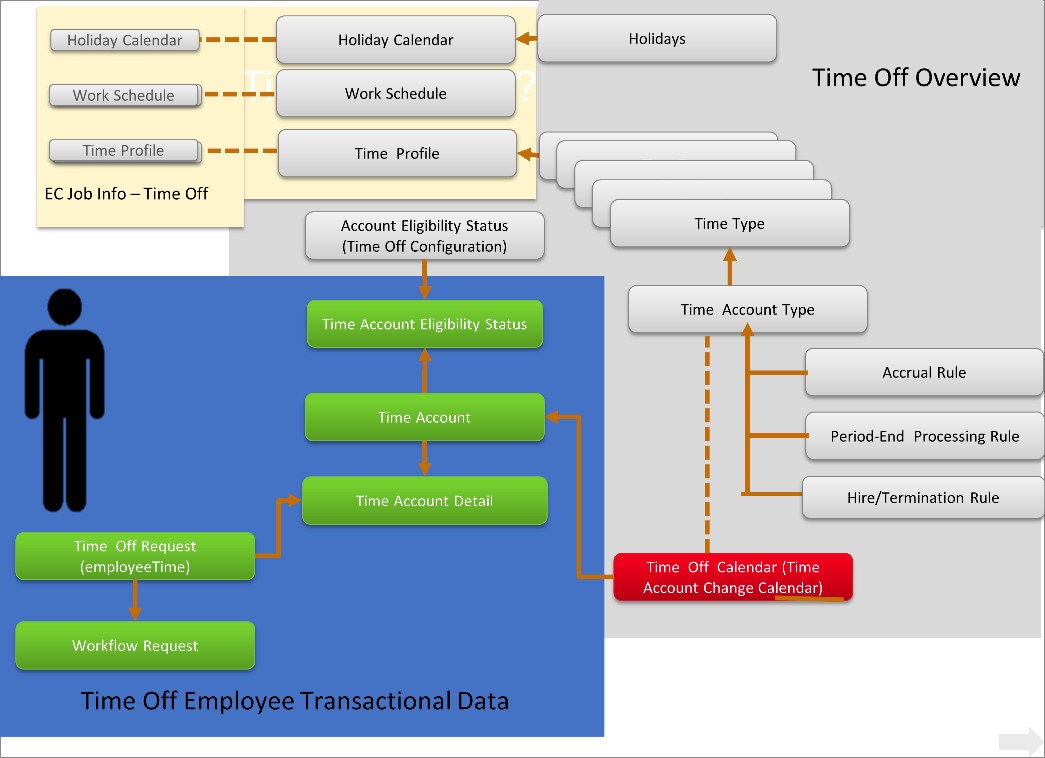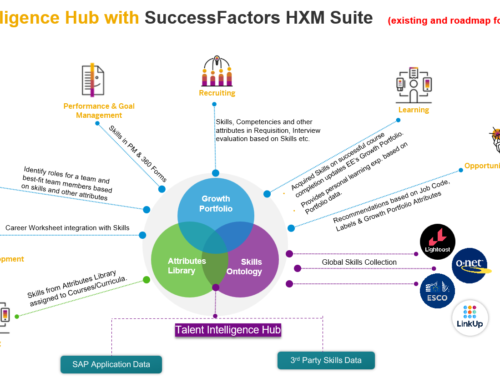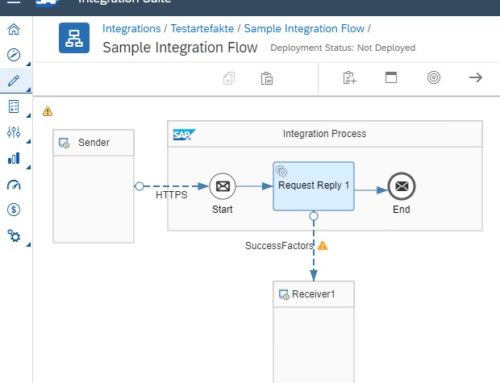
Overview system architecture SAP SuccessFactors Time Off-Solution & SAP SuccessFactors Time Management
As in the previous blog post SAP Time Management was explained, the Time Off Solution enables employees to record their absences. This overview focuses on the system architecture and how the SuccessFactors Time Off solution works.

The figure illustrates the system architecture of the Time Off Solution. The illustration shows all the necessary objects that must be "puzzled" together in order for the Time Off solution to work properly.
The system architecture of the SAP Time Off Solution can be divided into three components. The first component can be represented by the master data. The master data is stored and managed in three important objects. These three objects are called Holiday Calendar, work schedule and Time profiles. These objects are assigned to the employees in the job information (the master data objects are highlighted in yellow in the figure). All information and sub-objects relevant to the absence management process can be found and managed in these objects. Therefore, the master data objects must exist in the system and be assigned to the appropriate employees so that time off functionality can be used. The implementation is not necessarily successful just because the objects are assigned to the employees.
The second component is represented by the so-called configuration data, which is marked in gray in the figure. The configuration data objects can be viewed as sub-objects which are configured and then assigned to the master data objects. The relationship between the master data objects and the configuration data objects is also illustrated by the figure. The Holidays are, for example, the master data object, the Holiday Calendar assigned. The Time Account Type and its associated rules (Accrual rule, Period End Processing Rule and Hire/Termination Rule) become dem TimeType-Object assigned, which in turn is assigned to the master data object, the Time profiles is assigned.
The third component consists of the movement data marked in blue in the figure. The motion data objects contain all information that "moves". In other words, the transaction data objects contain information that is constantly changing, such as the annual holiday entitlement. This changes, for example, if the employee requests X vacation days.
Rough implementation procedure:
The first step to successfully implement the Time Off Solution is to create the master data in the system. This includes three objects. A work schedule, which is defined by the customer Time profiles, where all the needed Time types are included by a country. Also includes a Holiday Calendar. As already mentioned, there is Holiday Calendar from public holidays that are created separately. However, the customer must provide a list of the necessary public holidays so that they can be created at all.
In the second step, the configuration data is configured in the system. That is, the ones supplied by the customer Holidays are created and the Holiday Calendar assigned. Afterwards it will TimeType configured to suit customer requirements and dem Time profiles assigned (that TimeType has many settings and options that need to be either enabled or disabled depending on customer needs).
In the third step, rules such as the Accrual rule, Period End Processing and the Hire/Termination Rule. Then a Time Account Type configured according to customer requirements and the created TimeType assigned (that Time Account Type also has many settings and options to either enable or disable depending on customer needs). The transaction data will result from the configuration and master data using certain tools if everything has been implemented correctly.




